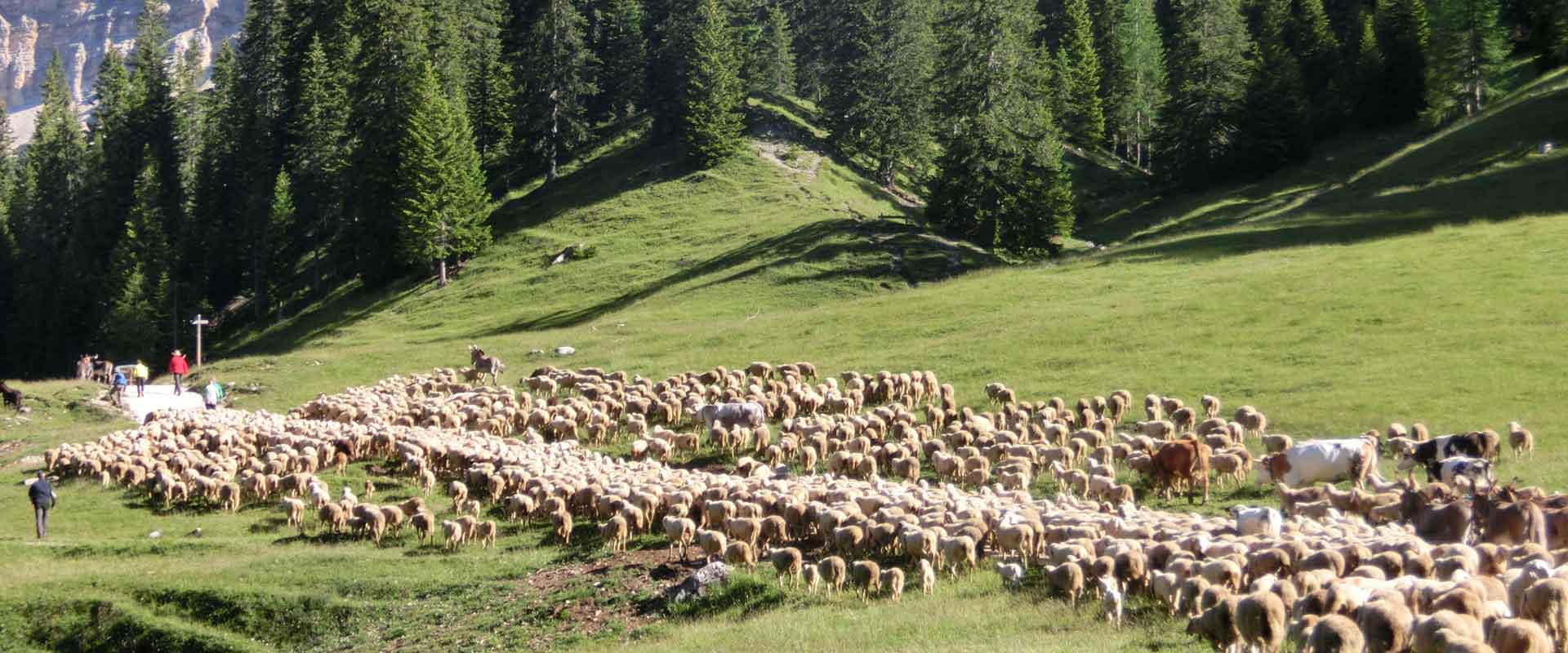MENU


For a long time, the collective heritage of forests and pastures had been the main source of sustenance for the people living in the mountains. The collective ownership of lands was born with the first inhabitants of the valley, likely some Celtic tribes who used pastures in common. The Romans considered the pastures as belonging to the masi (farms) of the valley and called them compascua pro indiviso: i.e.pastures were private property of the community.
The institution of the Regole achieved a firm basis after the Lombard invasions (from 578 AD). The Longobards introduced the fundamental concept of family property, that is still alive. Lands were considered as granted by the State to the family and had to remain undivided; if a family had no heirs, their land went back to the tribe. This is how the idea that pastures were the collective property of the original Consorti was introduced and the Regole became a closed community.
Under the rule of the Franks (from 774) Cadore became a county and was divided into ten rural communities called "centene". As a consequence, Ampezzo became an independent district and remained such until 1511. Frank Feudalism did not affect the institutions already existing in the area, since Feudal Lords showed no interest in the exploitation of mountain territories. In 1235, count Da Camino, feudatory of Cadore, issued the earliest Statutes, which ratified local customs and officially acknowledged the Regole.
At first, the "mountain" Regole - called High today to distinguish them from the Low ones - were created for the common management of high pastures. The earliest recorded Regola is the Regola of Lerosa and Travenanzes or Vinigo (1225); the Regola of Falzarego (1238), Lareto (1317), and Ambrizola followed. The Consorti of Falzarego joined up with the ones of Ciostego as early as 1318 and in 1377with those from Ambrizola; in 1331 the Consorti of Ciasadiò federated with those of Lareto. As a result three large groups were formed: Ambrizola with its pastures on the orographic right of the Boite river, Lareto on its left, and the Consorti of Vinigo in the Felizon valley.
In 1337, after Rizzardo Da Camino died without heir, Cadore became an Independent Rural Municipality. In 1338, the representatives of the centene drew up a Statute which remained in force till the Napoleonic period; this statute recognised each single Regola. The 1338 Statuto Cadorino granted the full ownership of the forests to the original communities. Hence, Ampezzo forests were private and undivided property of the Ampezzo people. The forests were managed by the Community of Ampezzo, originally the Regola of the valley floor. The earliest vize date back to the 14th centuries; these are the forests where the Regole or the Community of Ampezzo would forbid treecutting and pasturing for a number of years: a sort of "integral natural reserve" ahead of times.
During this period of independent rule (1347-1420), the Regole consolidated and the earliest Laudi - written sets of rules – were issued: the Laudo of the Regola d’Ambrizola dates back to 1331-33; the Laudo of the Regola of Lareto to 1363. In 1412, during the war between King Sigismund and Venice, some Regolieri from Vinigo, - then owners of Ospitale and the Felizon valley– were taken prisoners by the Tyrolean troops. In order to obtain the sum needed to free their Consorti, the Regolieri of Vinigo sold the pastures of Ospitale, Lerosa, and Travenanzes to the Regolieri of Lareto. In 1420 Venice occupied the whole Friuli area. The 1338 Statutes, however, were confirmed so that Cadore was able to maintain its constitution, privileges and rules intact, the only thing that changed being the protectorate.